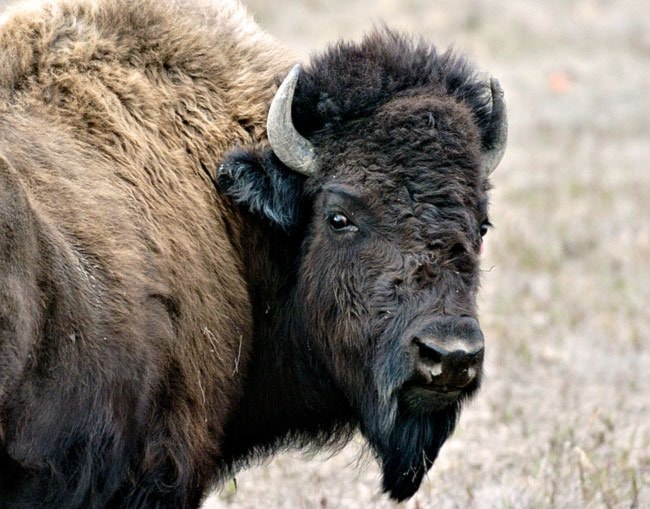Environment Yukon is asking hunters to help curb the territory’s growing wood bison population.
Following this summer’s census, there are an estimated 1,470 animals in the herd, according to Yukon biologist Tom Jung.
That’s almost 500 over the limit set in a 2012 management plan.
But had the census been carried out post-hunt, or just after March 31, the number would have been 1,136.
The census is usually carried out in July because the bison gather on top of mountains then and are easy to spot.
“A lot of calves were born this year and it’s a bit of an issue,” Jung said.
There are ongoing concerns about the bison herd’s impacts on its surroundings, he said.
There is always the threat of bison wandering onto highways and causing accidents, and some worry the animals may be displacing other species, like moose and caribou.
Despite loosening the rules to encourage more hunters to target wood bison, their numbers have steadily increased over the years.
It’s estimated there was just over 1,300 of them following the last census, which took place in July 2011.
Until 2008 there was a lottery to allocate hunting permits for bison.
The lottery system was removed and the allowable harvest doubled, among other strategies to encourage hunters.
There are two ways of bringing the numbers down: either you increase mortality or you decrease the birth rate, Jung said.
Although hunters managed to harvest an average of 142 bison annually over the past six years, it’s still not enough.
Hunters are now encouraged to harvest more cows than bulls.
“About 60 per cent of the harvest, on average, is bulls,” he said.
“We want to try and even it out to 50-50. We’ve been trying to do that for several years.
“We always had a hunch that a skewed harvest would be a problem for us. The latest projections hammered that home for us.”
It’s not very easy to distinguish between a cow and a bull, however. That is, unless you’re a biologist who studies the species on a regular basis.
“It’s easier when we’re talking about older animals,” he said.
“But when it comes to bison aged two, three or four years old - and there are a lot of those - it’s a lot harder.”
Environment Yukon uses an unorthodox method of estimating herd sizes.
For the third time, they’ve used high-powered paintball guns to tag bison.
The conservation officers mark as many bison as they can - they strive to mark about 10 per cent of the population - and go back a few days later to count the number of marked versus unmarked.
They try to hit the bison at least 10 to 12 times each so they’re properly tagged.
It’s a process they repeat three times over the summer.
This summer, 105 bison were paintballed.
“Using some mathematics we’re able to count how many we missed and come up with an estimate,” Jung said.
“When we initially came across the idea of paintballing bison it seemed a bit strange to me. They were already doing it in other jurisdictions with other species, such as caribou and elk.
“People may think we’re just out there having fun, but this makes a lot more sense from a biological point of view.”
This approach is less invasive than using radio collars or ear tags, Jung said.
The bison are only slightly bothered for a period of roughly 10 to 30 seconds, and the paint wears off after two weeks.
Since their re-introduction to the territory in 1988, bison have also been found in some unexpected places.
This summer, they were spotted near the Donjek River in Kluane National Park.
“Sometimes they wander into new areas. We didn’t expect to see them there,” Jung said.
“It they visit an area often enough they’ll eventually stay there. We’re studying what effect they’re having on other species.”
It is thought that the wood bison were locally extinct in the Yukon by the early 20th century.
The territory became involved in a national plan to restore bison populations in 1980, and between 1988 and 1992 it released 170 animals in the Aishihik region.
The management plan will be reviewed in 2017.
Contact Myles Dolphin at
myles@yukon-news.com
